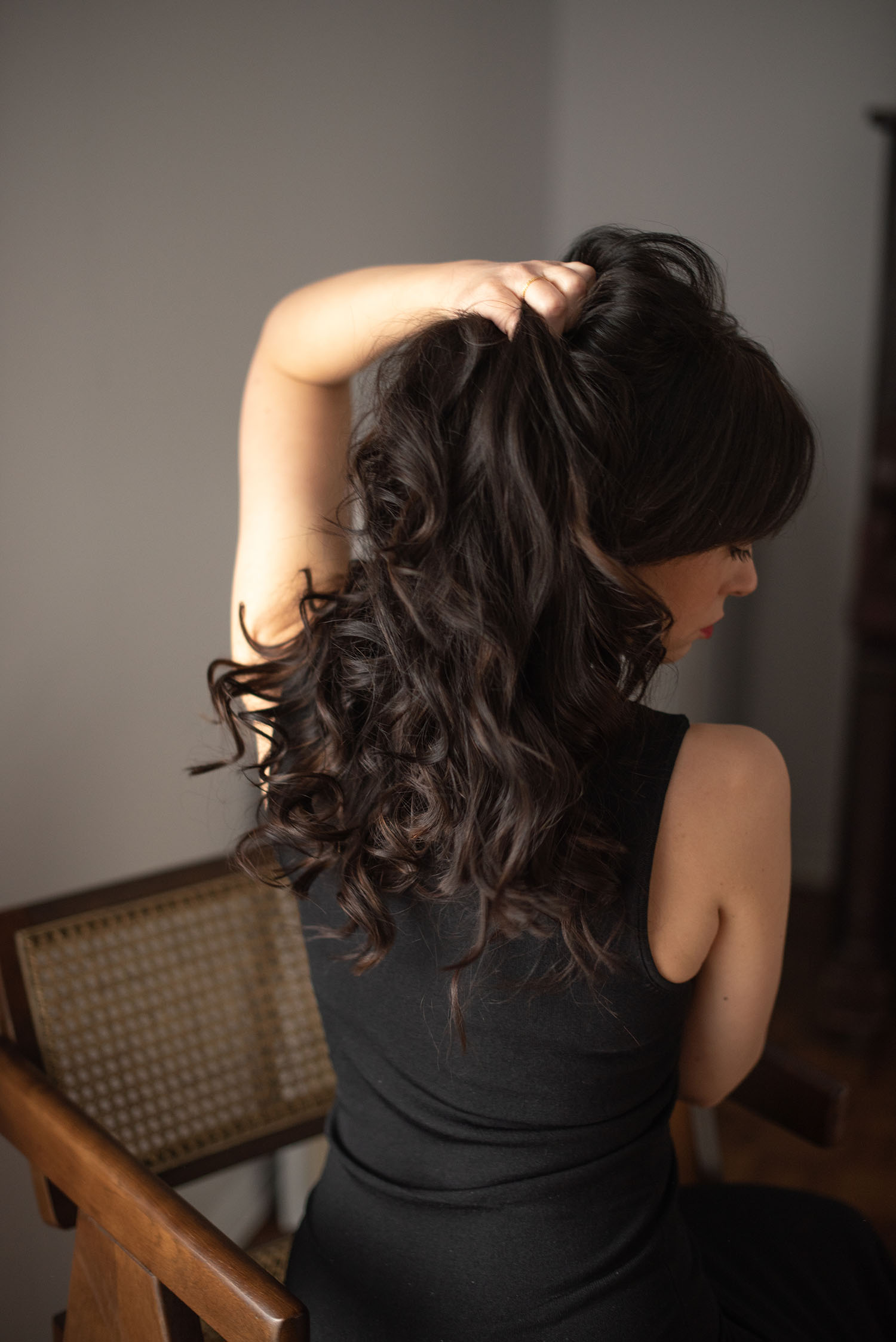

Flattered mules
Stella & Dot ring
Mejuri earrings (similar)
Location: Osborne Village – Winnipeg, Manitoba
A picture is supposed to be worth a thousand words. It’s meant to tell us something quickly, truthfully, that words, through paragraphs could not, or would not, because words are written by people who can choose or change them to hide the truth. But when I look at photos we take in our home, I don’t see a picture worthy of multiple paragraphs. Frankly, I don’t see much at all.
And that, I suppose, is the story. After ten days away from home, ten enriching days of sunshine and looking at art and finding beauty at every corner turned, I return to look at photos of my life in Winnipeg and see nothing of significance. The problem, I am beginning to realise, isn’t that there is nothing to my life here. It isn’t that I couldn’t create images worth a thousand words. It’s that so often, I don’t bother, because I don’t see the value in it. I look outside at the snow and the dismal beige stone buildings that all resemble one another… then I look inside at my work laptop, surrounded by Post-It notes scribbled with a thousand things I must not forget… and I think, what is this worth, compared to days spent wandering among ancient ruins, pondering what came before me?
The answer, up to now, has always been, not much. And I can see that answer in the photos we take, in the blank, the lack of passion displayed in pictures shot in Canada versus those snapped in Europe. I’ve spent so much of my life focused on being somewhere else, on working towards getting to the next vacation, that I’ve failed to see the obvious worth of the rest of my life – the life that allows for those adventures to happen.
The story of that life isn’t very glamorous. A lot of it, especially the early chapters, is unhappy. And that’s part of why I’ve never felt it was worth telling. But there’s more to it than that. If I’m honest, I don’t just have a thousand words to describe these photos and what it takes, every single day, to make them happen – I have thousands that I’ve been holding back. For the purposes of this post, I’ll summarise.
I started working in the corporate world just before the financial crisis in 2008. It was a different working world back then. Experience wasn’t required. Often, it actually wasn’t preferred – employers had time and resources to train new staff. Most of them wanted to do it their way. The company I applied to asked for nothing more than a university degree and fluency in both official languages. I ticked both boxes.
That was all it took to get a job, but after the crisis, far from all it took to stay. I started working with vague visions of wearing tailored clothes and going to important meetings. In reality, the events of the mid-2000s brought with them hiring freezes, short staffing and cuts to every aspect of business that didn’t actively generate revenue. It was the end of administrative support, which I still miss every day. For young employees like me, it meant being lucky to have a job at all, and clinging tightly to whatever one you did. Far from important, we were expendable. Easily replaceable but rarely replaced. Job postings for open positions became elusive. Worse, they suddenly all asked for three years of experience, which I wouldn’t have under my belt until two and a half years later.
I wasn’t alone. My story is far from unique. Many of my peers, graduating from university just a semester later than I did, didn’t get into the working world before the financial crisis struck. In the decade since, I’ve witnessed so many of them struggle with perpetual underemployment, mounting debt loads and periods of joblessness. Those who started working, and survived with jobs intact, like I did, have in many cases stayed in those same jobs, still fearful there is nothing else for them. So in some ways, I can see, I was lucky.
But that luck came at a high cost, and mostly as a result of extreme obstinance. I refused to give up. And yet, I felt obligated to tolerate whatever my employer deigned to dish out, from unjustified poor performance reviews to genuine mistreatment, just to continue to collect a pay cheque. Meanwhile, my workload continued to mount at a rate that far outpaced increases to my compensation. There was a period of time when I changed jobs every ten months, either for small pay rise or the possibility of marginally better working conditions, even if it meant a pay cut. Sometimes, the gamble paid off. Other times, it cost me dearly.
The experience was humbling, sometimes humiliating, and not one I wanted to record for posterity. At twenty-five, three years out of university, I was so ground down by it that I actually stopped journalling. I couldn’t bring myself to continue to relive the events of my own life in writing.
Instead, I found a creative outlet in Coco & Vera. This space was an antidote to my day-to-day, and I kept them separate for fear of getting burned. I had jobs, at times, that felt poisonous; I worried that toxicity could spill over and spoil this thing that I loved. For a long time, I trudged through my daily work, loathing it, counting down to vacations when I could feel temporarily inspired. This was the years ago, though. My career has evolved substantially in the past decade. And especially the past five years. I don’t love what I do every minute of every day but it’s immensely important to me, a fact that I almost never let on and frequently minimize. I’m just realising now, quite belatedly, that it’s because I’ve never quite let go of the sense that it’s unglamorous, and thus unworthy of wasting words on. We forget events far more easily than feelings.
I said I’d summarise, but I’m getting close to a thousand words at this point. And there’s still so much more to say. Those early years didn’t defeat me – far from it. If anything, they taught me just how many reserves I had – how strong and capable I could be, when I needed to be, which was often. That’s the way it goes, a lot of the time. What doesn’t kill us shapes us, but that molding leaves marks that are difficult to rub off.
I’m incredibly proud, in truth, of how hard I worked to find the right job, to learn everything I need to in order to be genuinely good at it and to rise within the ranks as a result of those efforts. But that pride will always be tinged with a bit of regret. I went through a lot to get here, and many of those experiences made me feel less than, a stubborn sensation I’m still trying to shake off after a decade. So I don’t talk about it much, because it wasn’t, and often still isn’t, very pretty.
Pretty is what we’re here for, mostly. But pretty is only the part of the whole. And it doesn’t exist, at least in my world, without the ugly stuff. I worked hard for these photos. That’s the story they’re telling. I really, really wanted them and I made them happen, even if it meant rearranging my life to do it, which it sometimes does. I did the work. Just like I did for every set that came before, and every one that will follow. Just like I’ve done in my career every single day.
So these are my thousand words to say that finally, I’m starting to see that I need to embrace that whole, instead of just living from vacation to vacation, because there is worth in every part of my life, not just the parts that look a certain way. I need to let the passion I do feel here, which is a different kind of passion than I feel when I’m away exploring, come through, because it is a huge part of my story. And the whole story is one worth telling, even the hard parts.
Your earrings are stunning!
Miki x
https://www.littletasteofbeauty.com/